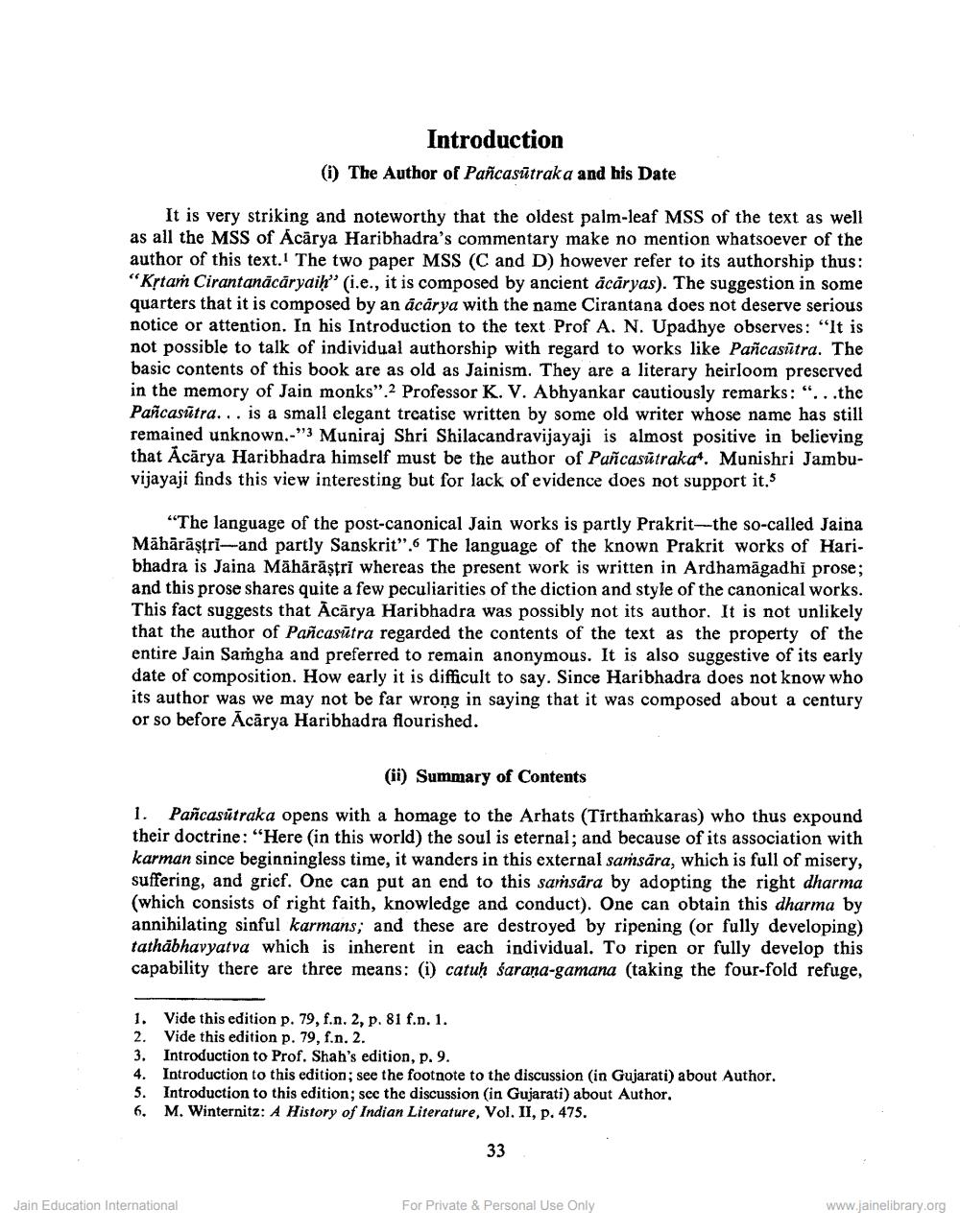________________
Introduction (i) The Author of Pañcasūtraka and his Date
It is very striking and noteworthy that the oldest palm-leaf MSS of the text as well as all the MSS of Acārya Haribhadra's commentary make no mention whatsoever of the author of this text. The two paper MSS (C and D) however refer to its authorship thus: “Kytań Cirantanācāryaiḥ" (i.e., it is composed by ancient acāryas). The suggestion in some quarters that it is composed by an acārya with the name Cirantana does not deserve serious notice or attention. In his Introduction to the text Prof A. N. Upadhye observes: "It is not possible to talk of individual authorship with regard to works like Pancasitra. The basic contents of this book are as old as Jainism. They are a literary heirloom preserved in the memory of Jain monks".2 Professor K. V. Abhyankar cautiously remarks: "...the Pancasūtra... is a small elegant treatise written by some old writer whose name has still remained unknown.-"3 Muniraj Shri Shilacandravijayaji is almost positive in believing that Ācārya Haribhadra himself must be the author of Pañcasūtrakat. Munishri Jambuvijayaji finds this view interesting but for lack of evidence does not support it.5
“The language of the post-canonical Jain works is partly Prakrit--the so-called Jaina Māhārāştri-and partly Sanskrit". The language of the known Prakrit works of Haribhadra is Jaina Māhārāştri whereas the present work is written in Ardhamāgadhi prose; and this prose shares quite a few peculiarities of the diction and style of the canonical works. This fact suggests that Ācārya Haribhadra was possibly not its author. It is not unlikely that the author of Pancasūtra regarded the contents of the text as the property of the entire Jain Samgha and preferred to remain anonymous. It is also suggestive of its early date of composition. How early it is difficult to say. Since Haribhadra does not know who its author was we may not be far wrong in saying that it was composed about a century or so before Acārya Haribhadra flourished.
(ii) Summary of Contents
1. Pancasūtraka opens with a homage to the Arhats (Tirthamkaras) who thus expound their doctrine: "Here (in this world) the soul is eternal; and because of its association with karman since beginningless time, it wanders in this external saṁsāra, which is full of misery, suffering, and grief. One can put an end to this saṁsāra by adopting the right dharma (which consists of right faith, knowledge and conduct). One can obtain this dharma by annihilating sinful karmans, and these are destroyed by ripening (or fully developing) tathābhavyatva which is inherent in each individual. To ripen or fully develop this capability there are three means: (i) catuḥ sarana-gamana (taking the four-fold refuge,
1.
3. 4. 5. 6.
Vide this edition p. 79, f.n. 2, p. 81 f.n. 1. Vide this edition p. 79, f.n. 2. Introduction to Prof. Shah's edition, p. 9. Introduction to this edition; see the footnote to the discussion in Gujarati) about Author. Introduction to this edition, see the discussion in Gujarati) about Author. M. Winternitz: A History of Indian Literature, Vol. II, p. 475.
33
Jain Education International
For Private & Personal Use Only
www.jainelibrary.org




